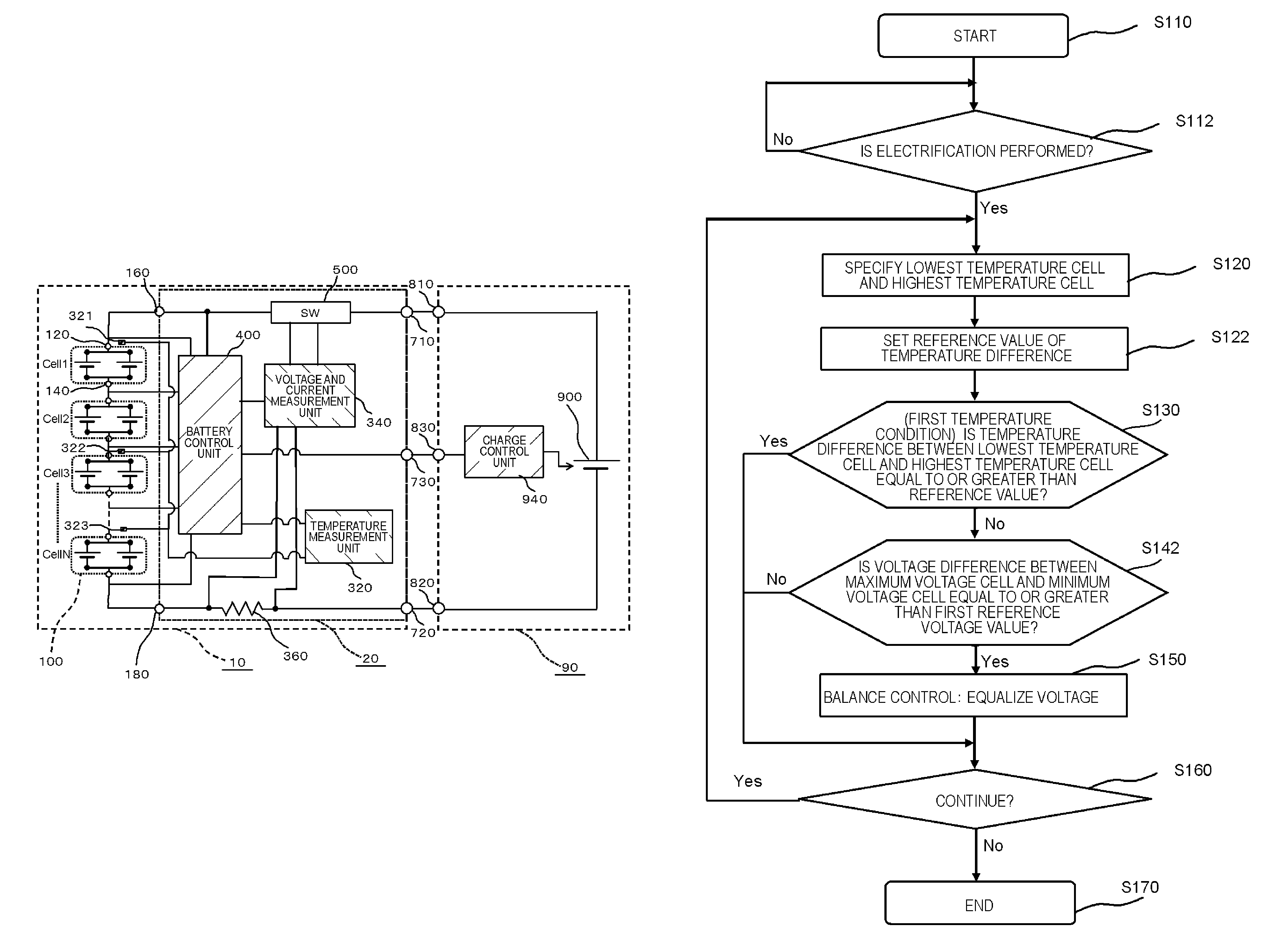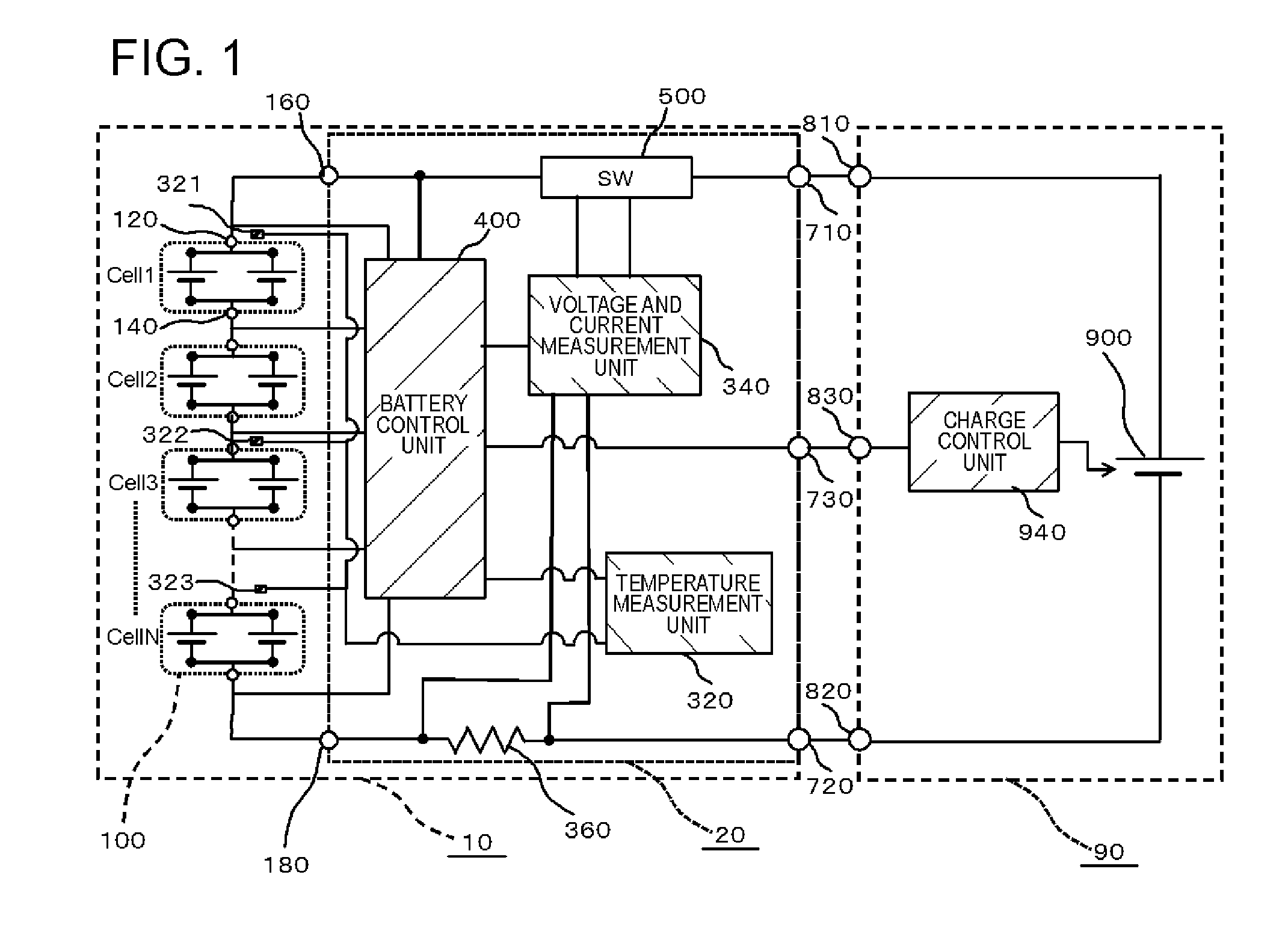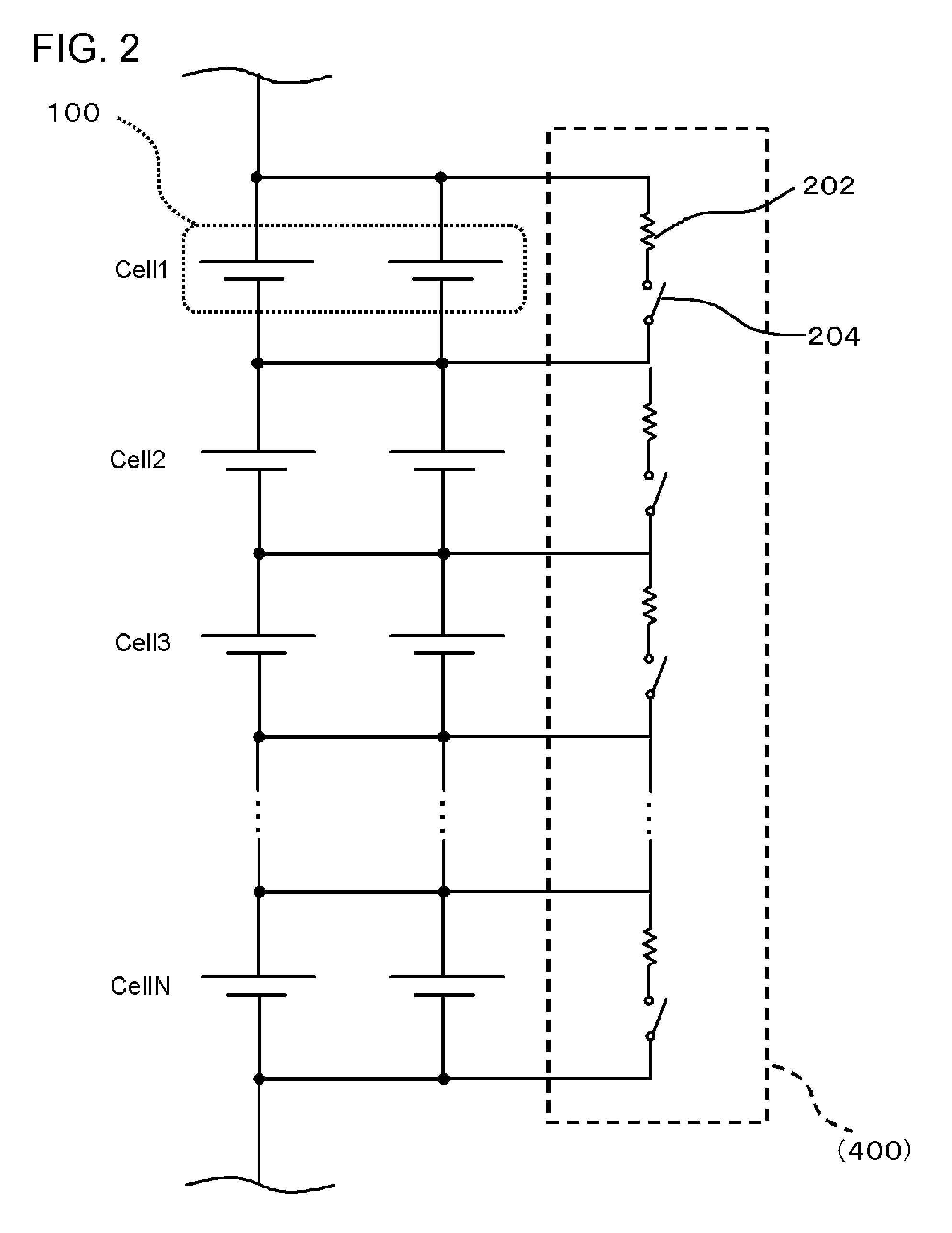Battery control system and battery pack
a battery control system and control system technology, applied in secondary cell servicing/maintenance, safety/protection circuits, instruments, etc., can solve the problems of unplanned balance control and battery control unit not performing unnecessary balance control, and achieve unplanned balance control and stably charge or discharge the battery pack
- Summary
- Abstract
- Description
- Claims
- Application Information
AI Technical Summary
Benefits of technology
Problems solved by technology
Method used
Image
Examples
first embodiment
[0032]The battery pack 10 according to a first embodiment will be described with reference to FIGS. 1 and 2. FIG. 1 is a circuit diagram illustrating a configuration of the battery pack 10 and an electronic device 60 according to the first embodiment. The battery pack 10 includes a plurality of battery cells 100, a temperature measurement unit (temperature measurement unit 320 and temperature sensor), a voltage measurement unit and an electrification detection unit (voltage and current measurement unit 340), and a battery control unit (battery control unit 400). Meanwhile, in the first embodiment, the voltage and current measurement unit 340 serves both as the voltage measurement unit and the electrification detection unit. The plurality of battery cells 100 are connected in series to each other. The temperature measurement unit 320 measures temperatures of two or more battery cells 100. The battery control unit 400 controls charge and discharge of the battery cell 100. In addition,...
modified example
[0135]The first embodiment can be modified as follows. In the following modified example, the same effects as that in the first embodiment are also obtained.
[0136]In the first embodiment, a case where the battery cell 100 having a maximum voltage is a lowest temperature cell has been described. However, the battery cell 100 having a maximum voltage may not be a lowest temperature cell. In this case, it is also possible to obtain the same effect as that in the first embodiment. Meanwhile, in this case, the battery cell 100 of which the voltage becomes maximum is targeted for determination in S142.
[0137]In addition, in the first embodiment, a case has been described in which it is determined in S142 whether the voltage difference is equal to or greater than the first reference voltage value. However, as shown in FIG. 4, instead of S142, the battery control unit 400 may determine whether there is a battery cell 100 in which a difference between the voltage thereof and an average voltag...
second embodiment
[0144]A second embodiment will be described with reference to FIGS. 8 and 9. FIG. 8 is a circuit diagram illustrating a configuration of a battery pack 10 according to the second embodiment. FIG. 9 is an equivalent circuit diagram in the vicinity of the battery cells 100 of the battery pack 10 according to the second embodiment. The second embodiment is the same as the first embodiment, except for the following points. The battery pack 10 of the second embodiment further includes a balance circuit 200 that adjusts the voltages of the battery cells 100. In addition, the battery control unit 400 performs balance control by controlling the balance circuit 200. Hereinafter, a detailed description will be given.
[0145]In the second embodiment, the balance circuit 200 which is a unit that adjusts the voltage of each of the battery cells 100 in the battery control unit 400 according to the first embodiment is provided independently.
[0146]As shown in FIG. 8, the balance circuit 200 is connec...
PUM
| Property | Measurement | Unit |
|---|---|---|
| temperature | aaaaa | aaaaa |
| temperatures | aaaaa | aaaaa |
| voltage measurement | aaaaa | aaaaa |
Abstract
Description
Claims
Application Information
 Login to View More
Login to View More - R&D
- Intellectual Property
- Life Sciences
- Materials
- Tech Scout
- Unparalleled Data Quality
- Higher Quality Content
- 60% Fewer Hallucinations
Browse by: Latest US Patents, China's latest patents, Technical Efficacy Thesaurus, Application Domain, Technology Topic, Popular Technical Reports.
© 2025 PatSnap. All rights reserved.Legal|Privacy policy|Modern Slavery Act Transparency Statement|Sitemap|About US| Contact US: help@patsnap.com



